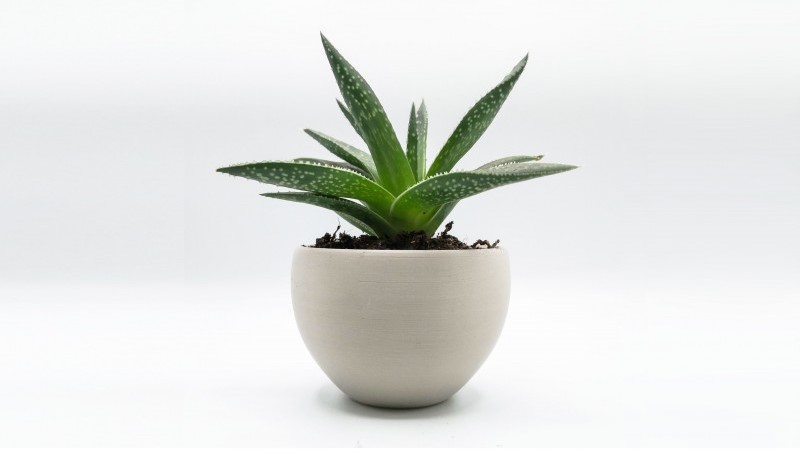The 2021 3D Printing Industry Awards shortlists are now open for voting until the 20th of October. Cast your votes here.
The climate crisis is edging ever closer and the 3D printing industry, like many others, is increasingly pumping out sustainability initiatives to decrease both our carbon footprint and our use of synthetic polymers.
The US Department of Energy’s (DOE) Office of Fossil Energy and Carbon Management (FECM) recently announced almost $7 million in funding to support seven projects focused on developing coal waste-based materials for additive manufacturing and researching coal-derived graphite materials. By enabling better use of coal waste products, the project is ultimately intended to accelerate the country’s goal of transitioning to 100% renewable green energy by the year 2035.
Elsewhere, 3D printing materials developer Recreus recently launched its new Purifier range of filaments. The new line comprises two new filaments, Filaflex Purifier and PLA Purifier, capable of converting Carbon Dioxide (CO2), Nitrogen Oxides (NOx), and Volatile Organic Compounds (VOCs) into harmless mineral particles.

$7 million for seven projects
Overseen by the National Energy Technology Laboratory’s (NETL) Carbon Ore Processing Program, the seven sustainability projects will aim to research and develop novel technologies to better utilize coal waste products such as tailings and ash. The organizations involved will either develop new filaments for 3D printing, or develop sustainable graphite-based materials for applications such as batteries and fuel cells.
The seven selected projects are as follows:
- ‘Coal-Enhanced PEEK Filament Production for Additive Manufacturing in Industrial Services’ – Baker Hughes Energy Transition.
- ‘Fused Deposition Modeling Additive Manufacturing of Carbonized Structures Via Waste-Enhanced Filaments’ – Ohio University.
- ‘Coal Waste-Enhanced Filaments for Additive Manufacturing of High-Temperature Plastics and Ceramic Composites’ – Semplastics.
- ‘Lab-scale Production of Coal-Derived Graphene Particle Bonded Filaments’ – University of Delaware.
- ‘Utilization of Carbon Supply Chain Wastes and Byproducts to Manufacture Graphite for Energy Storage Applications’ – Ohio University.
- ‘Molded Graphite Products Synthesized from Waste Coal’ – Touchstone Research Laboratory.
- ‘Advanced Processing of Coal and Coal Waste to Produce Graphite for Fast-Charging Lithium-Ion Battery Anode’ – University of North Dakota Energy & Environmental Research Center.
“Ohio is leading the way on industrial energy efficiency,” said US Senator Sherrod Brown. “These federal funds will allow us to continue to invest in cutting edge energy technology, so that we’re creating local jobs and improving our economy in a responsible and sustainable way, while developing the next generation of innovative technology.”
Recreus’ Purifier filament range
Recreus’ new Purifier range works by integrating greenhouse gas mineralization particles in the filament itself. The ‘smart particles’ result in CO2, NOx, and VOCs adhering to the surfaces of 3D printed parts made of Purifier filaments, where they undergo a transformation through the processes of catalysis and photocatalysis. The harmful gases and particles are transformed into calcium carbonate (CaCO3), magnesium carbonate (MgCO3), and ferrous carbonate (FeCO3), which are harmless to both the environment and humans.
PLA Purifier, which is based on Recreus PLA, is an easy-to-print filament designed for low-cost rigid parts. On the other hand, Filaflex Purifier is an elastic TPE material based on the company’s Filaflex filament. Designed for soft and flexible parts like insoles, product packaging, and wearable accessories, Filaflex Purifier can be printed with the same build parameters as Filaflex 82A.
Sustainability in 3D printing
Over the past few years, we’ve seen an influx in environmental sustainability efforts coming out of the additive manufacturing sector. Just last month, KIMYA, the 3D printing subsidiary of French printing and coating firm ARMOR, helped local start-up CAPS ME industrialize the 3D printing of a new eco-friendly brand of reusable coffee capsules. Designed to simplify the coffee pod recycling process, each CAPS ME receptacle features a six-part 3D printed mechanism that automatically refills it once used.
Elsewhere, R&D firm GE Research, together with UC Berkeley and the University of South Alabama, was recently awarded a $2 million project through the US DOE to develop a decarbonization system for effectively extracting CO2 from the atmosphere. The $2 million ‘AIR2CO2’ project will combine 3D printed heat exchanger technology with innovative sorbent materials.
3D printer manufacturer Stratasys also recently committed to furthering circular economy processes, climate action, and social change by establishing its Stratasys Sustainability function.
Subscribe to the 3D Printing Industry newsletter for the latest news in additive manufacturing. You can also stay connected by following us on Twitter, liking us on Facebook, and tuning into the 3D Printing Industry YouTube Channel.
Looking for a career in additive manufacturing? Visit 3D Printing Jobs for a selection of roles in the industry.
Featured image shows a plant pot 3D printed using Filaflex Purifier. Photo via Recreus.


